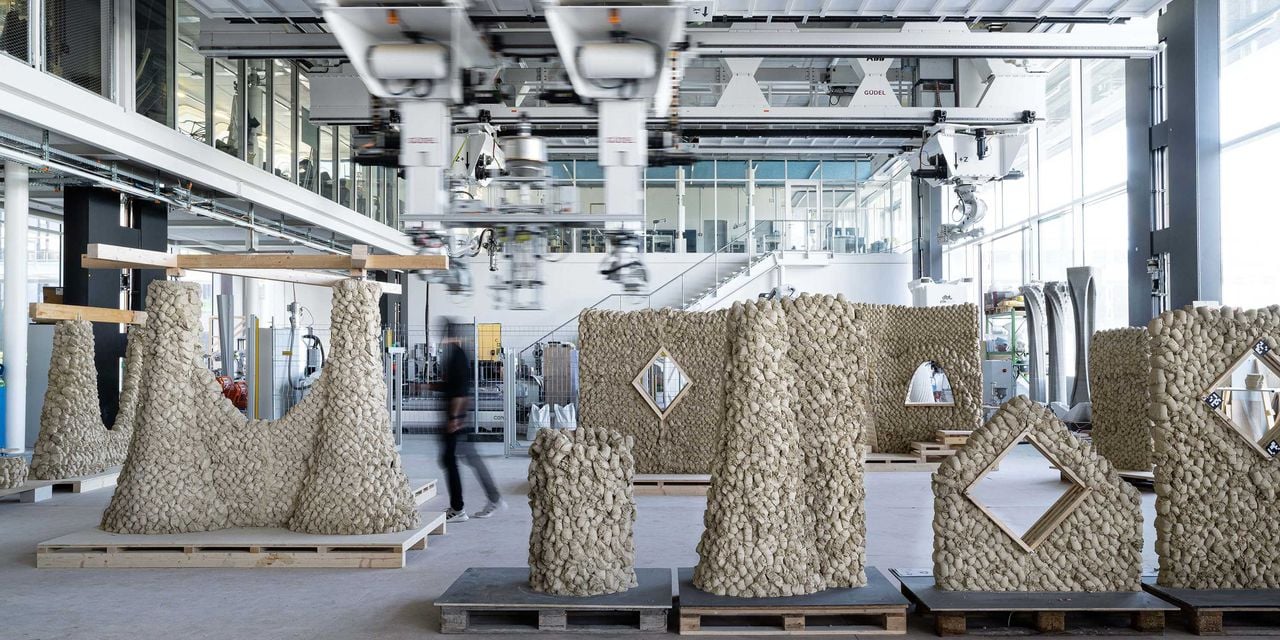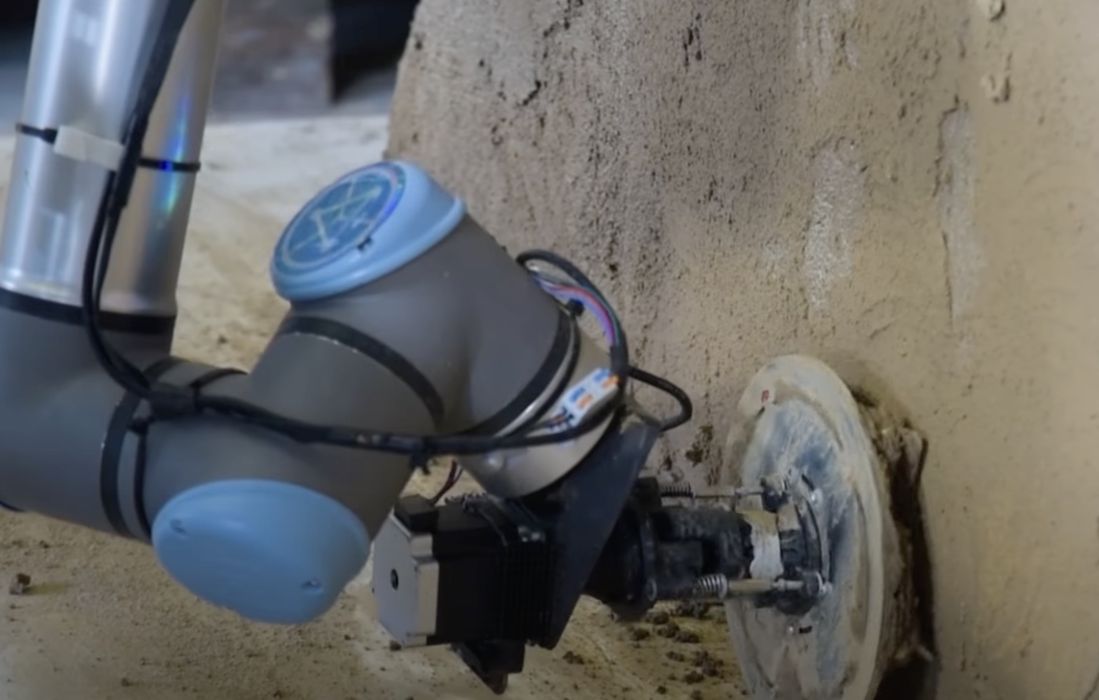
Researchers have developed a new form of 3D printing that they call “Impact Printing”.
The research into this technology is construction 3D printing, which today is dominated by the 3DCP process. 3DCP is essentially concrete extrusion through a robotic gantry or arm. The concrete flows through the printhead, and buildings are constructed layer by layer. It’s a technology that’s slowly catching on in the construction market.
There’s one key issue with 3DCP, however: it uses cement. Cement is one of the major sources of global greenhouse gases because its production requires extreme heat that’s often generated with fossil fuels.
The researchers sought a method to 3D print earth-based materials that avoided or at least minimized the use of cement and similar additives. The result of their investigation is Impact Printing.
Impact Printing is quite an unusual 3D printing process, as it operates in a manner that no other process does. The system involves grabbing a fist-sized chunk of suitable material from a hopper and then ejecting it downwards at high speed. At ten meters per second, there’s quite a bit of kinetic energy in the earth packet. When this strikes the surface below, it adheres very well due to molecular bonding that’s encouraged by the impact.
What is the material used here? They explain:
“Our low-environmental-impact earth-based mixture is under development and includes several components: primarily locally sourced secondary material with a low amount of mineral admixture.”
That sounds ideal for general use worldwide.
In a sense, objects built by Impact Printing are done voxel by voxel — except the voxels are quite large. As you can see in the images, the surface texture on the printed objects clearly resolves the packets. These packets are quite large, but in many building situations, that doesn’t really matter.

However, there is a way to transform the Impact Printed surfaces to a smooth finish. Here you can see how they’ve adapted a robotic arm to use a rotary polisher to smooth out the surface.
This video shows how it works:
You’ll note that it seems relatively slow to deposit earth packets. The machine has to load up a new packet and prepare for ejection on each deposit, much like artillery. The slow speed could be a barrier to adoption, as 3DCP seems to have a much higher volumetric deposition rate.
On the other hand, this is a proof of concept made by the researchers. It is likely possible to optimize the design to speed up the process considerably.
Will this be commercialized? It’s not clear yet, as industry entrepreneurs will have to investigate the possibilities. The 3DCP industry is still quite new, so if Impact Printing is feasible and financially attractive, it could become a popular technology.
Via ETH Zurich
